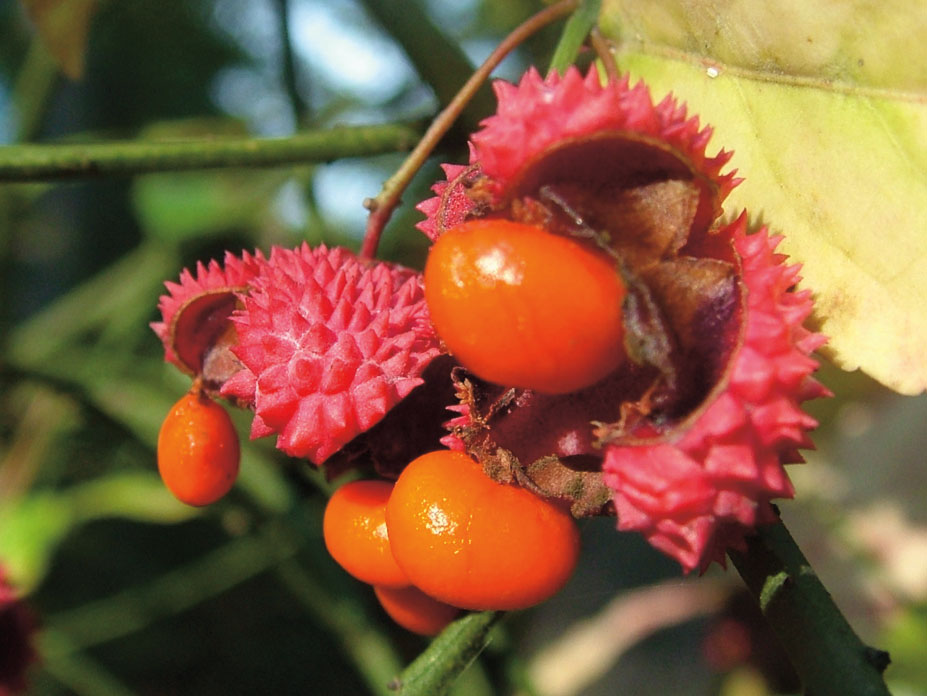Nowhere on the Duke campus is spring more joyously revealed than in the Sarah P. Duke Gardens. The space comprises four distinct gardens that offer delights throughout the year. We asked the curators of each garden to pick a favorite plant species blooming within.

Arisaema sikokianum. W.L. Culberson Asiatic Arboretum. Paul Jones, curator
Cobra lily: This flower derives its scientific name from the small Japanese island of Shikoku, where it was first described. It’s perhaps better known locally as Jack-in-the-pulpit for its distinctive blooms in which “Jack,” a snow-white spadix, stands upright in a deep- purple spathe. This woodland flower blooms in mid-April.

Edgeworth chrysantha. Historic Gardens, Mike Owens, Curator. [Credit: Orla Swift]
Oriental paper bush: Found near the entrance to the Memorial Garden, this bush blooms near winter’s end, a sweetly scented prelude to the gardens’ full spring awakening. In full bloom, silky, tube-like flowers cluster along its branches. The plant is native to China’s Szechuan province; its fibers are often used to make fine-quality paper.

Euonymus americanus. H.L. Blomquist Garden of Native Plants. Stefan Bloodworth, curator. [Credit: Stefan Bloodworth]
Hearts-a-bustin': This woodland shrub might be overlooked in other times of the year, but in late fall, it puts on a show that can’t be missed. During fruiting, the slender four-to six-foot shoots carry crimson-red capsules that split open to reveal their fleshy orange seeds. Native to the southeastern U.S., this shrub is related to vines of the bittersweet family.

Rostrinucula dependens. Doris Duke Center Gardens. Jason Holmes, curator. [Credit: Jason Holmes]
Weeping rostrinucula: This shrub takes center stage in late summer, when it produces a cascade of pink flowers that maintain their color throughout fall and into winter. Native to south central China, it can be found in the Doris Duke Center Gardens’ East Meets West Garden. And if you time your visit just right, you might run into a group of butterflies or hummingbirds, who consider the shrub a favorite stopover on their migrations.

Share your comments
Have an account?
Sign in to commentNo Account?
Email the editor